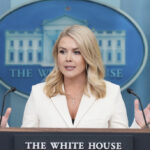Jobless claims/ unemployment/ U.S. labor market/ Fed rate cuts/ economy/ inflation/ Newslooks/ WASHINGTON/ J. Mansour/ Morning Edition/ After a surge caused by recent hurricanes, U.S. jobless claims fell by 19,000 last week, returning to typical levels. The drop reflects steady hiring despite economic pressures from high interest rates and inflation concerns. Meanwhile, the Federal Reserve recently cut interest rates to stabilize the job market and prevent recession.
U.S. Jobless Claims Dip as Labor Market Shows Resilience – Quick Looks
- Jobless Claims Decline: Weekly unemployment claims fell by 19,000 to 241,000, back to recent averages after a storm-related surge.
- Hurricane Impact: Recent hurricanes and a Boeing strike caused the previous spike, marking the highest level since mid-2023.
- Federal Reserve Rate Cuts: In response to slowing job data and eased inflation, the Fed lowered interest rates last month.
- Employment Trends: Despite some cooling, September saw a robust 254,000 new jobs, reflecting steady hiring activity.
Jobless Applications Fall as Labor Market Remains Steady
Deep Look
U.S. jobless claims decreased significantly last week, with the number of Americans applying for unemployment benefits falling by 19,000 to a total of 241,000, returning to more typical levels after a recent spike due to hurricane disruptions. This decline, reported by the Labor Department on Thursday, comes just a week after claims reached their highest level since June 2023, largely due to the impact of Hurricane Helene in the Southeast and a labor strike involving Boeing machinists.
Weekly jobless claims are often viewed as a key indicator of layoff trends in the U.S. labor market, and last week’s reduction points to stability in hiring despite recent economic challenges. Although claims briefly rose to 260,000, economists had expected them to remain elevated at that level due to storm-related disruptions. The four-week moving average, which smooths out weekly fluctuations, rose slightly to 236,250, signaling some ongoing volatility.
The broader labor market has been showing mixed signals, with recent weather events and the Boeing strike temporarily increasing jobless filings. However, underlying data suggests that high interest rates may be starting to impact employment. The Federal Reserve responded to these signs last month by reducing its benchmark interest rate by half a percentage point. This was the Fed’s first rate cut in four years after it had raised rates to a two-decade high of 5.3% to combat inflation. Fed Chair Jerome Powell noted that inflation is now largely under control, allowing the central bank to shift its focus toward supporting the labor market as the economy cools.
Lower inflation rates have been instrumental in giving the Fed flexibility to adjust rates. Last week, the government reported that inflation had reached its lowest level since early 2021, bringing it close to the Fed’s 2% target. This dovetails with findings from earlier in the year: between January and April, jobless claims averaged only 213,000 per week, underscoring the strength of the labor market. However, by May, claims began to rise steadily, peaking at around 250,000 in late July, hinting that higher borrowing costs are indeed impacting job creation and retention.
Further evidence of a cooling labor market came in August, when the Labor Department revised job growth figures downward, revealing that the economy had added 818,000 fewer jobs from April 2023 to March 2024 than initially reported. This adjustment provided additional evidence of a gradual slowdown, prompting the Fed to initiate rate cuts to maintain economic momentum.
Despite these trends, September’s employment numbers offered reassurance, with U.S. employers adding a strong 254,000 jobs, a figure that exceeded expectations and reflected continued demand for labor. Analysts suggest that while hiring may be cooling, the job market remains sufficiently robust to support ongoing economic expansion. The National Retail Federation has also forecasted a steady holiday shopping season, pointing to consumer spending resilience amid controlled inflation.
These employment and spending trends indicate that, while there may be some strain from high interest rates, the U.S. economy is showing adaptability, with job creation continuing at a pace that supports growth. Economists will be closely monitoring jobless claims and employment figures in the months ahead to assess the Fed’s strategy for achieving a “soft landing”—lowering inflation without triggering a recession. So far, easing inflation, strong consumer spending, and relatively stable hiring suggest that this outcome remains achievable, helping to sustain economic growth through the end of 2024.







